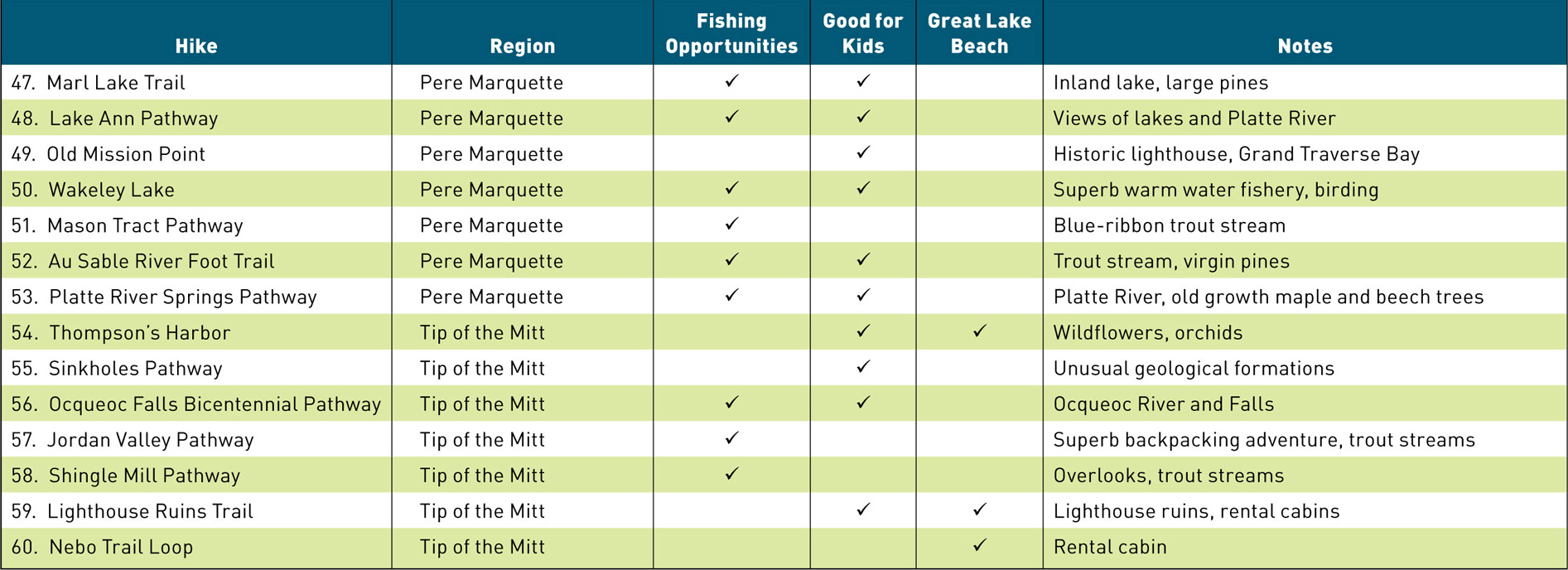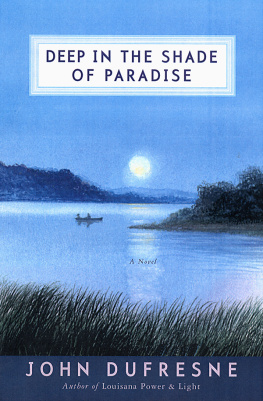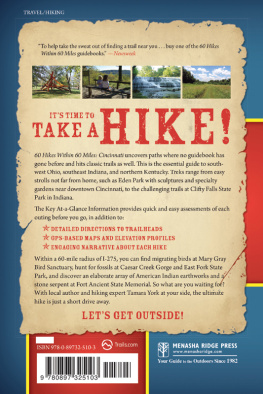Contents
Guide

OTHER BOOKS IN THE 50 HIKES SERIES
50 Hikes on Michigan & Wisconsins North Country Trail
50 Hikes in the North Georgia Mountains
50 Hikes in Northern New Mexico
50 Hikes in Ohio
50 Hikes in Orange County
50 Hikes in the Ozarks
50 Hikes in South Carolina
50 Hikes in the Upper Hudson Valley
50 Hikes in Wisconsin
50 Hikes in the Berkshire Hills
50 Hikes in Alaskas Kenai Peninsula
50 Hikes in Coastal and Inland Maine
50 Hikes in Kentucky
50 Hikes in the Catskills

50 HIKES
IN MICHIGAN
FOURTH EDITION
Jim DuFresne

AN INVITATION TO THE READER
Over time trails can be rerouted and signs and landmarks altered. If you find that changes have occurred on the routes described in this book, please let us know so that corrections may be made in future editions. The author and publisher also welcome other comments and suggestions. Address all correspondence to:
Editor, 50 Hikes Series
The Countryman Press
500 Fifth Avenue
New York, NY 10110
Copyright 2019 by Jim DuFresne
All rights reserved
For information about permission to reproduce selections from this book, write to Permissions, The Countryman Press, 500 Fifth Avenue, New York, NY 10110
For information about special discounts for bulk purchases, please contact
W. W. Norton Special Sales at specialsales@wwnorton.com or 800-233-4830
Series book design by Chris Welch
Production manager: Devon Zahn
The Countryman Press
www.countrymanpress.com
Library of Congress Cataloging-in-Publication Data is available
A division of W. W. Norton & Company, Inc.
500 Fifth Avenue, New York, NY 10110
www.wwnorton.com
978-1-68268-329-3 (pbk.)
978-1-68268-330-9 (ebk.)

Contents








W alking in the woods with my son, I suddenly stopped, stared at the two paths that confronted me, looked around for a trail sign, and finally pulled out the map.
Michael stared at me before asking the inevitable question, Are we lost?
Absolutely not. I know where we are.
Where?
In Michigan, I said, and then told my son to pipe down while I studied the map we had picked up at the Department of Natural Resources field office in Baldwin.
Lost in the woods? No, as my old scoutmaster used to say, just geographically displaced. And it shouldnt really have surprised me. We were hiking along Pine Valleys Pathway in Pere Marquette State Forest, planning to spend a night at the walk-in campsites on the shores of... Lost Lake. As with many foot travel areas in Michigans state forests, hikers share the area with horseback riders, mountain bikers, and skiers, while snowmobilers have their own trail passing through. Throw in a couple of old logging two-tracks and the dirt road to Stewart Lake, and its quite understandable why we were geographically displaced.
No problem. One nice feature of this 8-mile trail network is how well its been posted with trail signs. We merely retreated 100 yards to the last blue boot print we passed and corrected our error.
Another nice aspect of this pathway was that we didnt see another person on the trail that afternoon. Three wild turkeys, a ruffed grouse, and deer prints by the dozens, but no other backpackers. But the best part of the trip was emerging on the edge of a wooded bluff and finding Lost Lake for the first time. There wasnt a soul on the small lake. It was all ours. We descended to the shoreline, pitched our tent so we could view the whole lake from our sleeping bags, and spent most of the evening sitting on the bank, watching our bobbers on the still surface.
While enjoying our own little lake, for the first time that day we truly felt lost... from everybody and everything. And isnt that what hiking is all about?
HIKING IN SOUTHERN MICHIGAN
It should be no surprise that Michigan, with the worlds greatest collection of freshwater sand dunes, with the best trout streams east of the Mississippi, with 3,200 miles of Great Lake shoreline, has the trail network and scenery every hiker dreams about. A hike in the Great Lakes State is not just a walk down a dirt path but the means to see some of the countrys most spectacular natural treasures. From sand dunes without even a blade of grass to the towering monarchs of Hartwick Pines virgin forests, from miles of beach that turn to gold with every Lake Michigan sunset to one of the 11,000 inland lakes where, on a still evening, bass rise to the surface like trout, all these wonders of the Midwest can be reached by hiking foot trails.
The scenery is as varied as anywhere in the country, and so are the trails. Michigans paths include a fourth of what, when completed, will be the longest trail in the country, the 4,600-mile North Country Trail (NCT), and range down to a walk of less than a mile to the towering bluffs above Lake Michigan at the end of the Empire Bluff Trail. The hikes can be classified as walks, short and easy trails that are usually less than 3 miles in length; trails, which include a variety of terrain and are often 5 to 8 miles in length; and foot travel areas, a network of trails usually offering backcountry camping.
All three types of trails are in this book, which seeks to reveal the best 60 hikes in Michigans Lower Peninsula. The Straits of Mackinac make for a natural line to divide the state, as far as hikers are concerned. The only link between the Lower and Upper Peninsula is human-made: the 5-mile Mackinac Bridge.
But driving time also separates the two peninsulas. From Michigans major urban areasDetroit, Grand Rapids, Lansing, Flint, Jackson, and Kalamazoomost of the hikes in this book are within a two- to three-hour drive and are almost always less than five hours away. The majority of them are thus possible day hikes, and most can be weekend destinations. But hikers in southern Michigan cannot reach and return from any trail in the Upper Peninsula in a day, and even on a weekend outing would be spending most of their time driving, not walking.



























